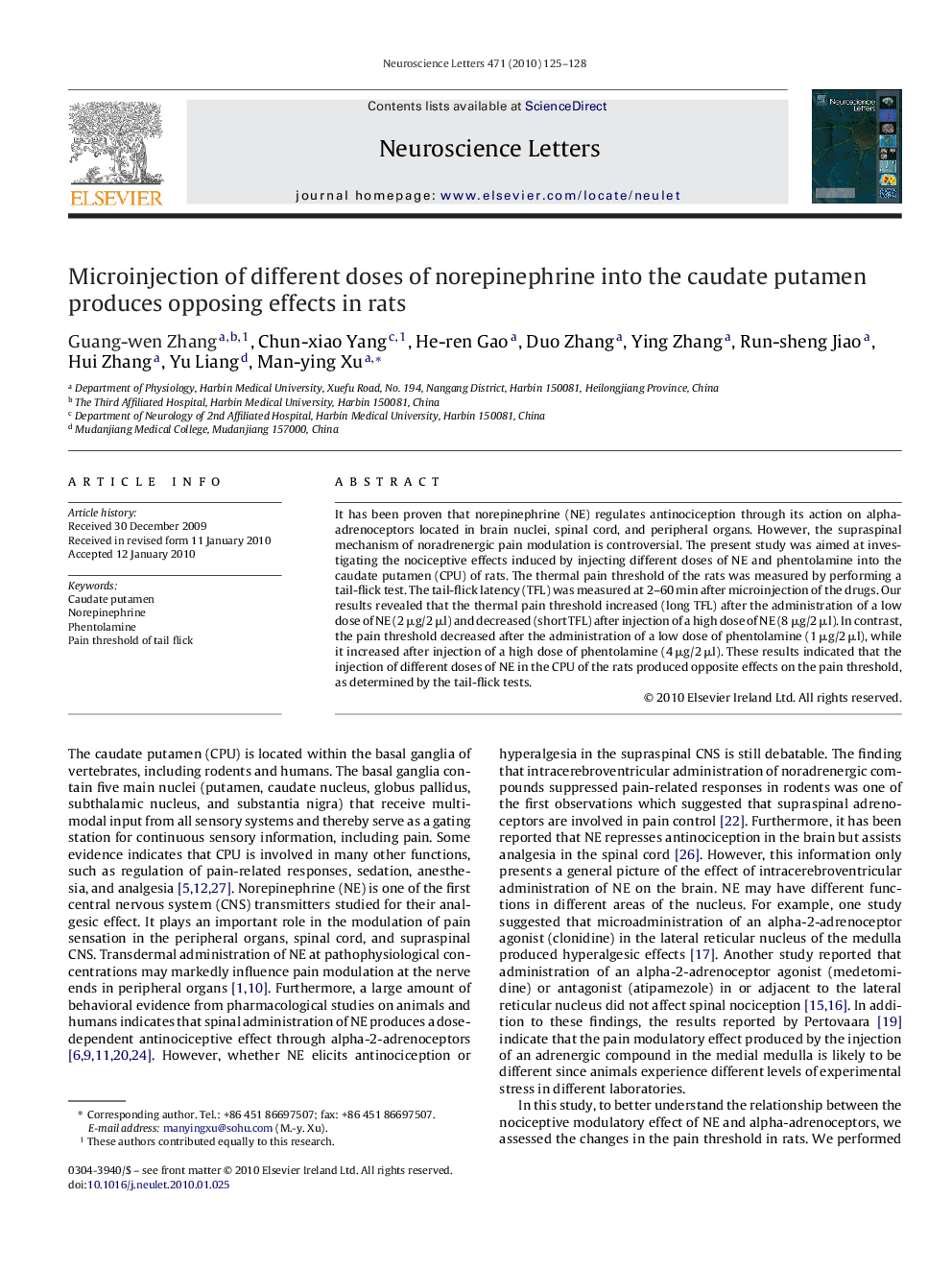| Article ID | Journal | Published Year | Pages | File Type |
|---|---|---|---|---|
| 4346353 | Neuroscience Letters | 2010 | 4 Pages |
It has been proven that norepinephrine (NE) regulates antinociception through its action on alpha-adrenoceptors located in brain nuclei, spinal cord, and peripheral organs. However, the supraspinal mechanism of noradrenergic pain modulation is controversial. The present study was aimed at investigating the nociceptive effects induced by injecting different doses of NE and phentolamine into the caudate putamen (CPU) of rats. The thermal pain threshold of the rats was measured by performing a tail-flick test. The tail-flick latency (TFL) was measured at 2–60 min after microinjection of the drugs. Our results revealed that the thermal pain threshold increased (long TFL) after the administration of a low dose of NE (2 μg/2 μl) and decreased (short TFL) after injection of a high dose of NE (8 μg/2 μl). In contrast, the pain threshold decreased after the administration of a low dose of phentolamine (1 μg/2 μl), while it increased after injection of a high dose of phentolamine (4 μg/2 μl). These results indicated that the injection of different doses of NE in the CPU of the rats produced opposite effects on the pain threshold, as determined by the tail-flick tests.
